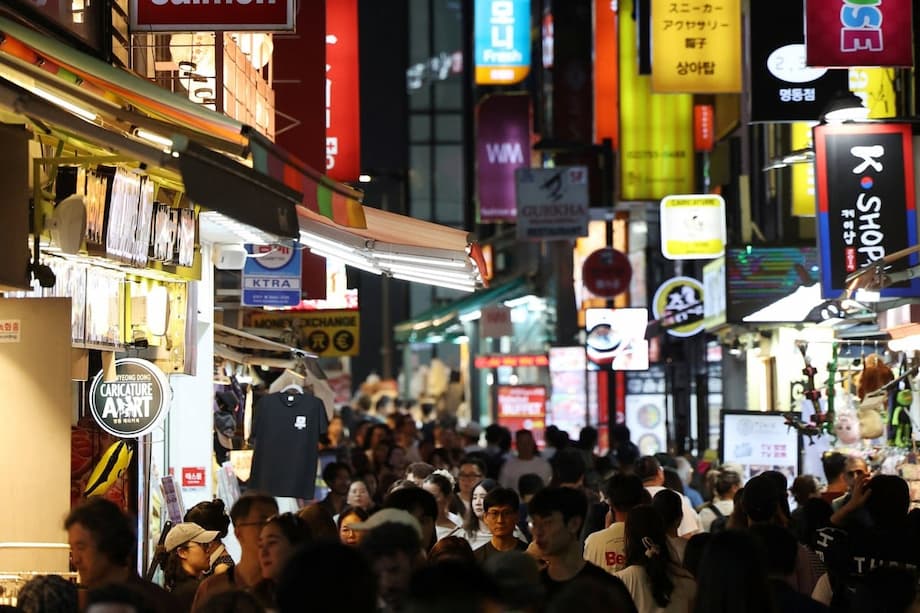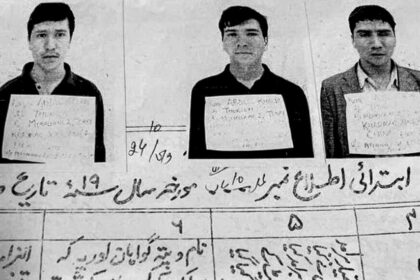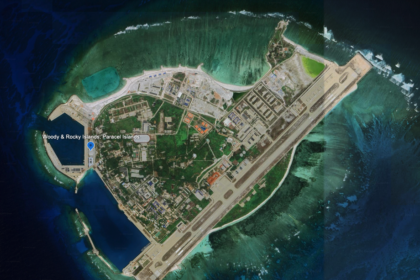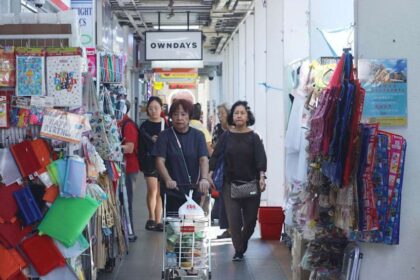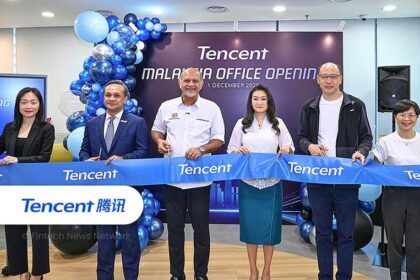South Korea Expands Foreign Workforce but Faces Integration Hurdles Amid Demographic Crisis
As foreign residents approach 5% of the population, experts and migrants say deeper social and legal reforms are needed for true inclusion.
In 2024, South Korea is witnessing a demographic transformation that is reshaping its cities, schools, and workplaces. Nearly 5% of the country’s population—about 2.73 million people—are now foreign nationals, a figure that has surged in recent years as the government seeks to counteract a record-low fertility rate and a shrinking workforce. International student enrollments have soared to 209,000, up 25% since 2022, and the number of foreign workers surpassed 1 million for the first time last year. Yet, beneath the surface of Seoul’s neon-lit streets and the global appeal of K-pop, many newcomers find themselves wrestling with rigid visa rules, social barriers, and a lack of anti-discrimination protections that make long-term integration a challenge.
- South Korea Expands Foreign Workforce but Faces Integration Hurdles Amid Demographic Crisis
- Why Is South Korea Opening Its Doors to Foreigners?
- How Are Foreigners Integrated Into Korean Society?
- Barriers to Long-Term Integration: Visa Rules, Discrimination, and Social Attitudes
- Education and the Challenge of Social Belonging
- Marriage Migrants and Multicultural Families: Between Hope and Hardship
- North Korean Refugees: A Unique Integration Journey
- Policy Debates: Beyond Labor Supply to True Inclusion
- International Comparisons and Local Innovations
- What Needs to Change for Lasting Integration?
- Key Points
For residents like Gwenaelle Storne, a 27-year-old Parisian fluent in Korean, working in Seoul’s IT sector and married to a South Korean, the uncertainty is constant. Despite government efforts to attract more foreigners, many are left weighing whether to stay or move on, as the promise of opportunity is often tempered by daily realities of exclusion and bureaucratic hurdles.
Why Is South Korea Opening Its Doors to Foreigners?
South Korea’s rapid economic growth in the late 20th century was built on a largely homogenous population. However, the country now faces a demographic crisis: its fertility rate has plummeted to 0.75, the lowest in the world, and the working-age population is projected to halve by 2070. Young Koreans increasingly avoid jobs in manufacturing, agriculture, and construction, leading to acute labor shortages in these sectors.
To address these challenges, the government has gradually relaxed immigration controls and introduced policies to attract foreign workers and students. The Employment Permit System (EPS), launched in 2003, allows legal entry for low-skilled foreign workers, primarily in sectors shunned by locals. International students are also being courted, with a target of 300,000 enrollments by 2028. These measures are seen as vital to sustaining the economy and supporting an aging society.
How Are Foreigners Integrated Into Korean Society?
Despite the growing presence of foreigners, integration remains a complex and uneven process. South Korea’s approach to multiculturalism is carefully managed, with government-led programs focusing on language support, after-school mentoring, and local interventions, especially in designated “multicultural zones.” Cities like Ansan, home to the country’s largest proportion of foreign residents, serve as laboratories for these initiatives.
At Hope365, a nonprofit support center in Ansan, early adaptation courses are offered in 18 languages, covering everything from opening bank accounts to understanding Korean values and laws. Community centers provide Korean language classes, community services, and multilingual libraries. These efforts aim to help newcomers navigate daily life and foster a sense of belonging.
Park Chang-hyun, from the justice ministry’s immigration integration division, explains the government’s goals:
“We want migrant children to have equal opportunities in Korean society. We want them to adapt well into society and be culturally comfortable so they can showcase their capabilities and talents.”
However, critics argue that these efforts are fundamentally one-sided, focusing on educating migrants rather than fostering mutual understanding with the host society. YoonKyung Kwak of the Korea Institute for Health and Social Affairs notes,
“What truly matters is whether Koreans see migrants as equal members of society—not merely as temporary workers or economic tools. Moving beyond an instrumental perspective toward a genuine sense of shared community is the next critical step for meaningful integration.”
Barriers to Long-Term Integration: Visa Rules, Discrimination, and Social Attitudes
While the EPS and other visa programs have increased transparency and reduced unauthorized migration, they also impose significant restrictions. Most foreign workers are tied to specific employers, making it difficult to change jobs or escape exploitation. Reports of wage theft, workplace abuse, and even physical violence are not uncommon. A tragic lithium battery plant fire in 2024 that killed 23 workers, mostly Chinese nationals, highlighted the disproportionate risks faced by foreign laborers.
Marriage migrants—primarily women from Southeast Asia—face their own set of challenges. Research shows that many arrive with high expectations, only to encounter language barriers, cultural misunderstandings, and conflicting expectations within their new families. Social integration is further complicated by Korea’s Confucian values and a lingering emphasis on ethnic homogeneity, which can lead to resistance and isolation for multicultural families.
Comprehensive anti-discrimination legislation remains absent, leaving migrants with little recourse when facing prejudice in daily life or in sectors like banking and housing. While a 2024 survey found that over 61% of Koreans consider having foreign residents in their neighborhood “normal,” acceptance varies sharply depending on the context and the type of migrant. Support for social benefits is much higher for permanent residents than for temporary workers, and concerns about crime, public spending, and job competition persist.
Education and the Challenge of Social Belonging
South Korean schools are at the forefront of integration efforts, particularly in multicultural zones. Language support and after-school mentoring help foreign children adapt, but barriers remain. Many students struggle with Korean, and social integration is often hindered by cultural differences and limited support systems. In universities, foreign students and faculty report difficulties in making friends and fully participating in campus life, with reluctance to integrate coming from both sides.
Success stories do exist. At Gonjiam middle school near Seoul, some foreign students have gone on to become teachers or attend university, thanks to targeted support. Yet, for many, the path to belonging is fraught with challenges, and the pressure to assimilate quickly can be overwhelming.
Marriage Migrants and Multicultural Families: Between Hope and Hardship
Marriage migration has become a significant pathway for foreigners, especially women from other Asian countries, to settle in South Korea. These women often face a dual burden: adapting to a new culture and language while navigating complex family dynamics. Studies reveal that many experience acculturative stress, social isolation, and a lack of understanding from both their spouses and the broader community.
Korean society’s expectation that immigrants swiftly adopt local customs and maintain a low profile is increasingly seen as outdated. Experts advocate for a “fair integration” model, where both immigrants and locals influence each other, fostering mutual respect and cultural exchange. Grassroots initiatives, such as food and language sharing programs, are emerging as promising avenues for building bridges between communities.
North Korean Refugees: A Unique Integration Journey
North Korean refugees occupy a distinct position in South Korea’s integration landscape. While they are granted citizenship and receive state support, their journey is marked by economic, social, and cultural hurdles. Discrimination based on accent, skepticism about political loyalties, and difficulties in the education system are common. Despite improvements in policy, many North Koreans struggle to find well-paying jobs and face persistent social isolation.
Kim Sung Kyung, associate director of the North Korea-South Korea Mind Integration Center, explains,
“Despite economic and legal improvements, cultural discrimination remains a significant issue. Integration efforts involve ongoing support from government agencies and non-profit organizations, often including educational programs aimed at fostering understanding and empathy among South Koreans.”
Policy Debates: Beyond Labor Supply to True Inclusion
Experts and policymakers increasingly argue that South Korea’s immigration policy must move beyond viewing foreigners as mere solutions to labor shortages. Moon Jae-wan, president of the Korea Migration Law Association, emphasizes the need to recognize immigrants as full members of society, contributing culturally and socially, not just economically. He calls for a balanced legal order that protects immigrants’ rights and promotes sustainable development.
Lee Chang-won, a researcher at the Migration Research and Training Center, points out that most work visas are issued for low-skilled, short-term labor, with few pathways to permanent residency or citizenship. Of the roughly 180,000 permanent residents, the majority are from the Korean diaspora or are marriage migrants, with only a small fraction earning residency through skills or entrepreneurship.
Kim Hyun-mee, a professor of cultural anthropology at Yonsei University, highlights the gap between progressive legal frameworks and actual integration practices. She advocates for a points-based residency system, similar to Australia’s, that would allow immigrants to gain permanent residency through education and work experience. Such reforms, she argues, are essential for supporting immigrants in sectors like construction and shipbuilding, providing a clear path to citizenship and integration.
International Comparisons and Local Innovations
South Korea’s integration challenges are not unique. Across the OECD, countries are grappling with how to balance labor market needs, social cohesion, and the rights of migrants. Recent trends include a stronger focus on social integration, combating discrimination, and improving access to housing and employment. Many countries are updating citizenship laws and expanding civic integration activities, reflecting a recognition that sustainable integration requires more than just economic participation.
Local partnerships and innovative approaches are gaining traction. The Council of Europe’s Intercultural Cities Programme, for example, supports municipalities in developing inclusive governance and services. Ansan, South Korea’s “multicultural laboratory,” has shared its experiences internationally, highlighting the value of knowledge exchange and community-driven solutions.
What Needs to Change for Lasting Integration?
Despite progress, significant obstacles remain. Comprehensive anti-discrimination laws are still lacking, and many migrants have no clear path to permanent residency or citizenship. Social attitudes, shaped by decades of ethnic homogeneity, are slow to change. Experts stress the importance of mutual adaptation, where both immigrants and locals learn from each other and build a shared sense of community.
Grassroots initiatives, increased civic participation by immigrants, and reforms to visa and residency policies are seen as key steps toward a more inclusive society. As South Korea continues to evolve, the challenge will be to move beyond treating foreigners as temporary laborers and embrace them as partners in building the country’s future.
Key Points
- Foreign nationals now make up nearly 5% of South Korea’s population, driven by labor shortages and demographic decline.
- Government programs focus on language support and adaptation, but integration remains uneven and often one-sided.
- Foreign workers face restrictive visa rules, workplace exploitation, and limited paths to permanent residency or citizenship.
- Marriage migrants and North Korean refugees encounter unique social and cultural challenges despite targeted support.
- Comprehensive anti-discrimination legislation is still lacking, and social acceptance varies by migrant type and context.
- Experts call for broader reforms, including points-based residency systems and greater civic participation by immigrants.
- International comparisons show that sustainable integration requires both policy innovation and shifts in social attitudes.


